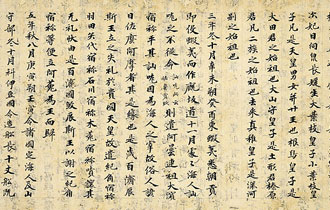Pages
|
The idea of Japanese values as having influence beyond Japan may at first seem surprising but, like the other Japanese elements discussed in this essay, this too has a tradition behind it. The tea ceremony offered ideals of behavior besides simply exotic refreshment, while Zen suggested a whole new vision of spirituality for post-war youth. Going back to the nineteenth century, the samurai spirit and Buddhism in general impressed both Americans and Europeans. We might even say that the ways of approaching nature or simply seeing the world that were implicit in Japanese art had an impact that went beyond merely the visual.
Whether Japanese popular culture will continue to have such a strong effect is, of course, open to question. As everyone knows, waves come and go. But in a globalizing world where technology allows us to interface with other cultures in a more intimate and rapid fashion than our ancestors ever dreamt of, it seems safe to say that the strengths of Japanese culture will continue to be appreciated for a long time to come.
Susan Napier
Pages
|











